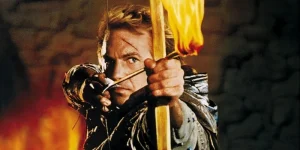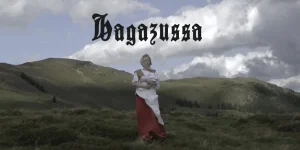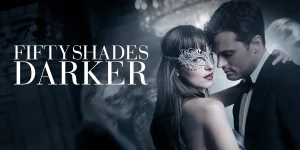The Wicker Man (1973), directed by Robin Hardy, is a folk-horror classic often described as one of the most unsettling films ever made. Unlike typical horror movies that rely on monsters or gore, it terrifies through atmosphere, ideology, and a shocking finale.
Table of Contents
ToggleDetailed Summary
Arrival at Summerisle
Sergeant Neil Howie (Edward Woodward), a devoutly Christian Scottish policeman, arrives by seaplane at the remote island of Summerisle. He is investigating the disappearance of a young girl named Rowan Morrison after receiving an anonymous letter. The villagers seem oddly cheerful but uncooperative, insisting Rowan never existed.
A Pagan Paradise
Howie quickly realizes that the islanders live by ancient Celtic pagan traditions. They celebrate fertility rites, worship nature, and openly engage in sexual rituals—practices that deeply offend Howie’s strict moral and religious values. Lord Summerisle (Christopher Lee), the charismatic leader of the community, explains that these traditions sustain the island’s crops.
A Growing Mystery
The investigation takes a surreal turn. Howie repeatedly finds contradictory clues: Rowan’s classmates claim not to know her, yet her name appears in a school register. He discovers Rowan’s grave, but the coffin holds only a hare. The villagers’ behavior grows increasingly bizarre, mixing deception with ritualistic singing and dancing.
The May Day Festival
Howie disguises himself in a costume to infiltrate the May Day celebrations, convinced Rowan is about to be sacrificed. He believes he’s uncovered the truth: the villagers plan to kill Rowan to restore fertility to their crops. Instead, Rowan is revealed to be alive and unharmed—it was all a ruse.
Movie Ending
The devastating twist comes when Howie realizes too late that he is the intended sacrifice. Lord Summerisle explains that the crops failed the previous year, and only a voluntary king-like sacrifice, representing purity and authority, can appease the gods. Howie, a virgin, a Christian, and a policeman—authority figure—fits the criteria perfectly.
The villagers overpower him, ignoring his pleas for mercy and his desperate prayers to God. They lock him inside a giant wicker effigy—the titular “Wicker Man.” As the structure is set ablaze, Howie sings hymns and shouts defiance, but the villagers cheer and sing pagan chants. The final chilling image is the burning effigy collapsing against the sunset, with Howie’s screams echoing, symbolizing both his martyrdom and the villagers’ triumph.
Are There Post-Credits Scenes?
No, The Wicker Man (1973) has no post-credits scene. The movie ends with the haunting shot of the burning wicker figure collapsing, followed by silence.
Type of Movie
This film is a folk horror thriller, blending elements of psychological horror, mystery, and cultural conflict. It avoids gore and relies instead on unsettling atmosphere, pagan rituals, and a clash of faiths.
Cast
- Edward Woodward as Sergeant Neil Howie
- Christopher Lee as Lord Summerisle
- Britt Ekland as Willow MacGregor
- Diane Cilento as Miss Rose
- Ingrid Pitt as Librarian
- Lindsay Kemp as Alder MacGregor
Film Music and Composer
The film’s folk-inspired soundtrack, composed and arranged by Paul Giovanni and Magnet, is integral to its mood. Songs like “Corn Rigs” and “Willow’s Song” are deceptively cheerful yet eerie, reinforcing the islanders’ strange rituals.
Filming Locations
- Scotland (Dumfries and Galloway, Ayrshire, Argyllshire, and the Isle of Skye) served as the setting.
- The picturesque rural landscapes give the film authenticity while contrasting nature’s beauty with sinister undertones.
- The famous burning of the Wicker Man was filmed near Burrowhead, where the charred remains reportedly stood for decades as a grim tourist attraction.
Awards and Nominations
At the time of release, the film received little recognition but later became a cult classic. It has since appeared in numerous lists of the greatest British films and horror movies ever made. In 1978, it won the Saturn Award for Best Horror Film (from the Academy of Science Fiction, Fantasy & Horror Films).
Behind the Scenes Insights
- Christopher Lee often stated this was his favorite role, even doing the film for free.
- Many scenes were cut by the studio, leading to decades of debate over the “true” version of the film.
- Britt Ekland’s famous nude dance scene was performed with a body double for certain shots, which she later criticized.
- The cast and crew endured harsh Scottish weather during production, making filming challenging.
Inspirations and References
The story was inspired by David Pinner’s novel Ritual (1967), which dealt with similar themes of paganism and sacrifice. Additionally, it draws heavily from British folklore and anthropological accounts of ancient Celtic rituals.
Alternate Endings and Deleted Scenes
The original cut was around 100 minutes, but distributor interference reduced it to about 88 minutes. Deleted scenes included more background on Lord Summerisle and extended pagan rituals. A “Director’s Cut” was later restored, incorporating much of this lost material.
Book Adaptations and Differences
The film was loosely based on Ritual by David Pinner but diverges in tone and story. While Ritual focuses more on psychological tension, The Wicker Man emphasizes folklore and ritualistic spectacle.
Memorable Scenes and Quotes
Key Scenes
- Howie discovering Rowan’s empty coffin filled with a hare.
- Willow’s hypnotic dance intended to seduce Howie.
- The May Day parade and the villagers in animal costumes.
- The climax: Howie burning inside the Wicker Man.
Iconic Quotes
- Lord Summerisle: “A heathen conceivably, but not, I hope, an unenlightened one.”
- Sergeant Howie (final prayer): “Oh God, oh Jesus Christ! Oh Lord! Oh my God! Christ!”
- Lord Summerisle (explaining the sacrifice): “Animals are fine, but our crops failed. Your crops did not fail because of the animals, Sergeant. They failed because the sacrifice was not of the right kind.”
Easter Eggs and Hidden Details
- The Wicker Man itself is based on real historical accounts of human sacrifices by the Celts, described by Julius Caesar.
- The recurring animal masks worn by villagers emphasize fertility and pagan symbolism.
- The film subtly contrasts Christian hymns with pagan folk songs, making music itself a battlefield of ideologies.
Trivia
- Christopher Lee considered it one of his greatest performances.
- The negatives were allegedly lost and later found in a studio vault in the U.S.
- The original U.S. release was paired as a B-movie with Don’t Look Now (1973), both of which later became classics.
- The movie’s cult status eventually led to the infamous 2006 remake starring Nicolas Cage.
Why Watch?
Because The Wicker Man is one of the most unique horror films ever made. It’s not about jump scares or gore—it’s about ideology, faith, and the terrifying power of community belief. The slow build-up and the unforgettable ending ensure it lingers with you long after the credits roll.
Director’s Other Movies
- The Fantasist (1986)
- The Wicker Tree (2011) – considered a spiritual sequel to The Wicker Man
Recommended Films for Fans
- Don’t Look Now (1973)
- Rosemary’s Baby (1968)
- Midsommar (2019)
- The Witch (2015)
- Blood on Satan’s Claw (1971)













